From Lettering Guides to CNC Plotters — A Brief History of Technical Lettering Tools
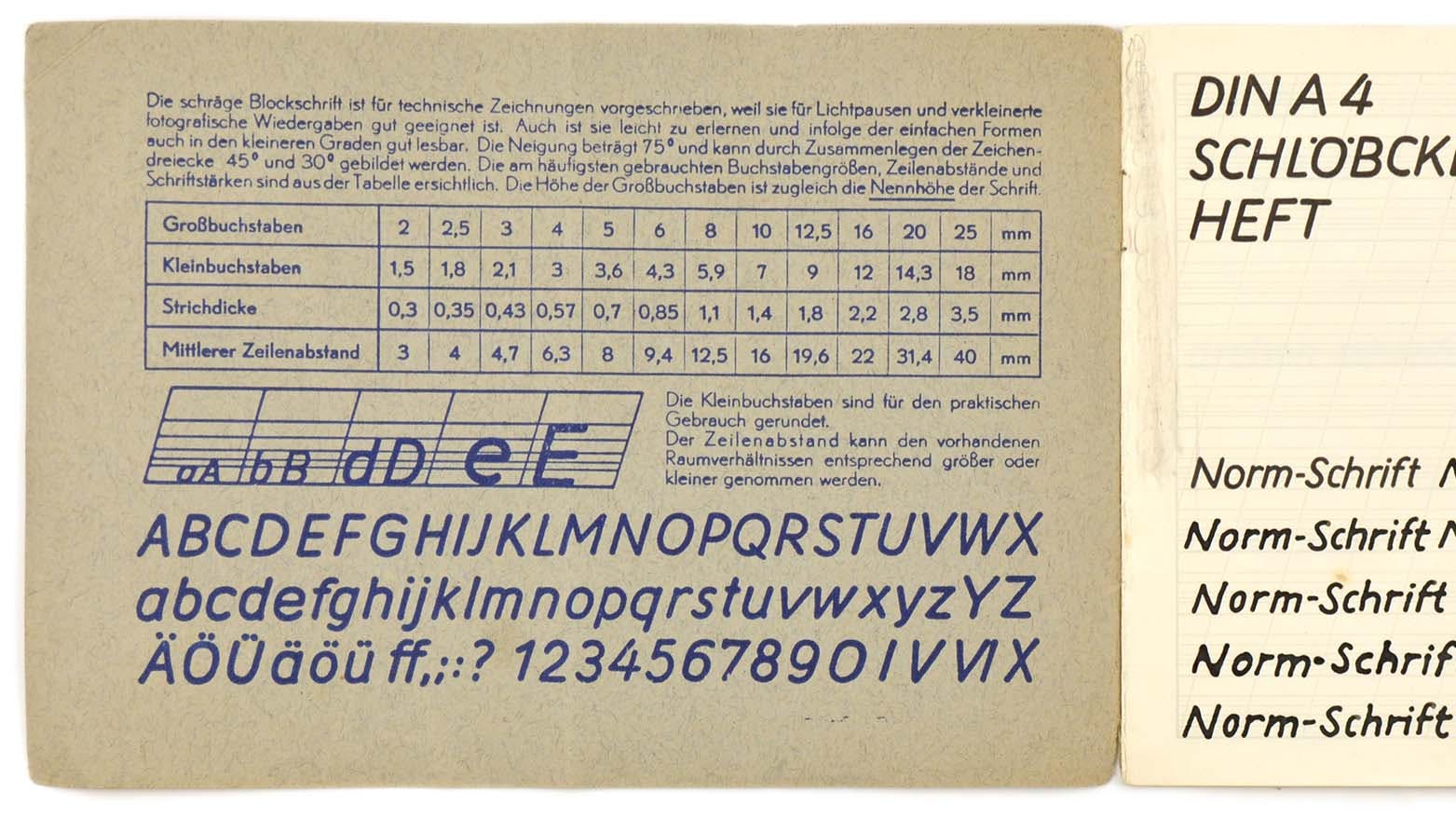
This article highlights some major steps in the historical development of lettering tools for drafting.
Technical lettering devices were used for inscribing or marking technical drawings, architectural plans, maps, and other documents. By the beginning of the 20th century, in the aftermath of the Second Industrial Revolution, a need arose for accelerating the speed not only of production, but also of drafting. Prior to this, all technical lettering was made freehand, in various styles, some of which were rather ornate, and not optimized for legibility or reproducibility. Clearly there was a demand for some standards. In a working environment based on division of labor and interregional trade connections, the engineers’ lettering needed to become more precise and uniform.
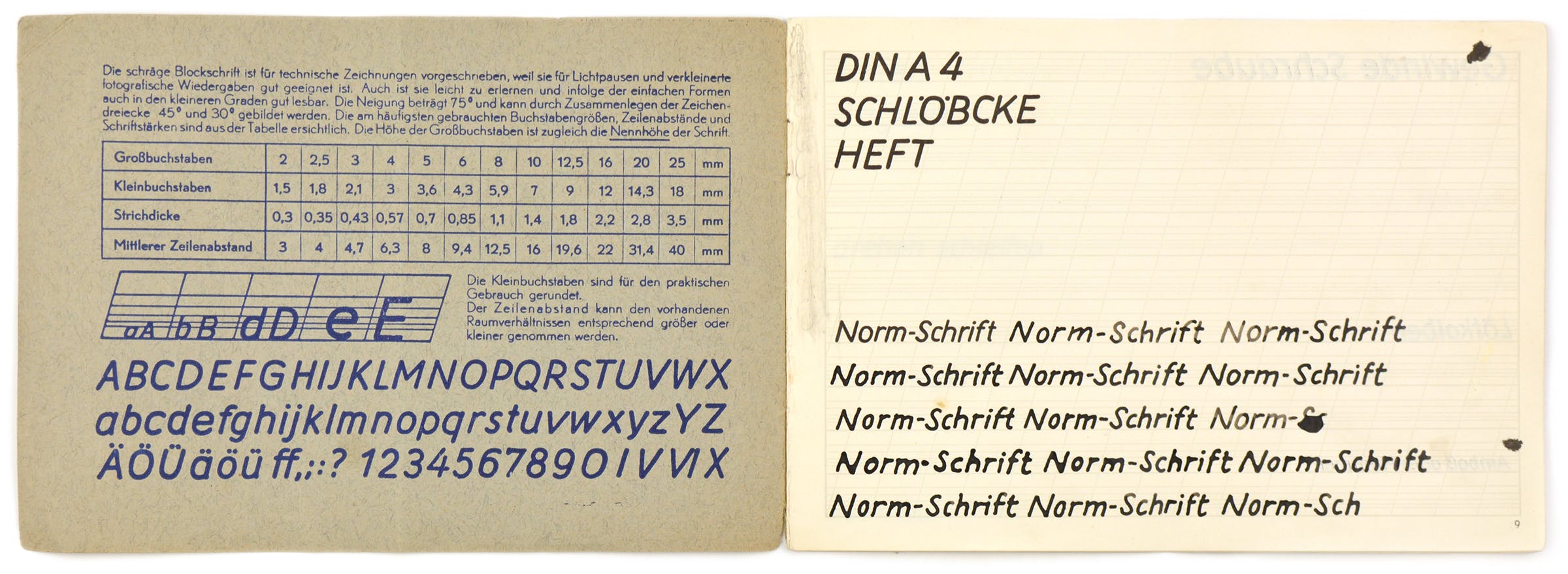
Lettering Guides
The most basic means of ensuring homogenous letterforms (beyond copybooks and practice) is a lettering guide template, or stencil. It consists of a sheet that can be moved along a fixed ruler or T-square, with cut-out shapes which are traced with a pen. The earliest guides intended especially for technical drawings date from the first decade of the 20th century. The Normograph, for example, invented by vocational school teacher Georg Bahr, was patented in Germany in 1909 and in America in 1912.
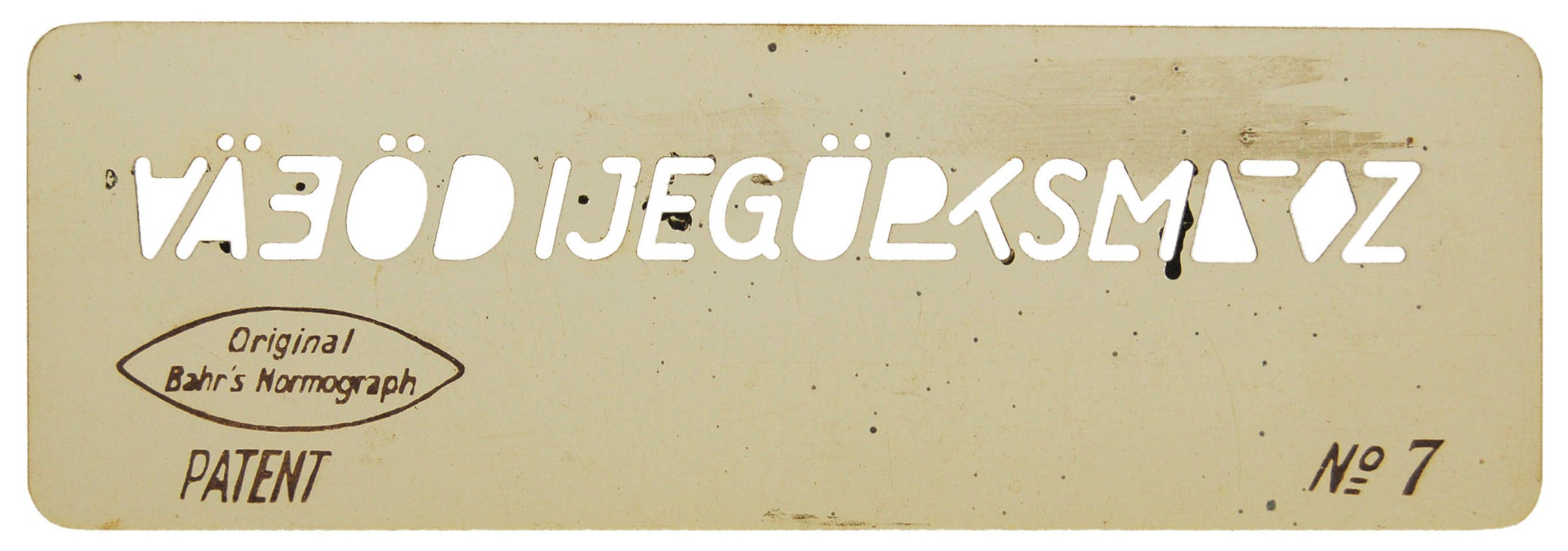
Bahr’s Normograph did not contain a full character set, but only a few elementary shapes — stems, arms, curve segments, diagonals — that needed to be combined into letters and numerals. Contemporary guides by most other manufacturers were equally limited. Uniformity in design was key, whereas speed was not as important as economy of material, since labor was cheap and celluloid was expensive. Lettering with these early guides still involved a good deal of craftsmanship, as several glyph parts were not defined by cut-outs, but had to be drawn freehand. Normographs were first produced on an industrial scale by the company Filler & Fiebig, and were followed by Standardgraphs, templates with full character sets. These were offered in a range of sizes and became so successful that the Filler & Fiebig company was renamed Standardgraph.
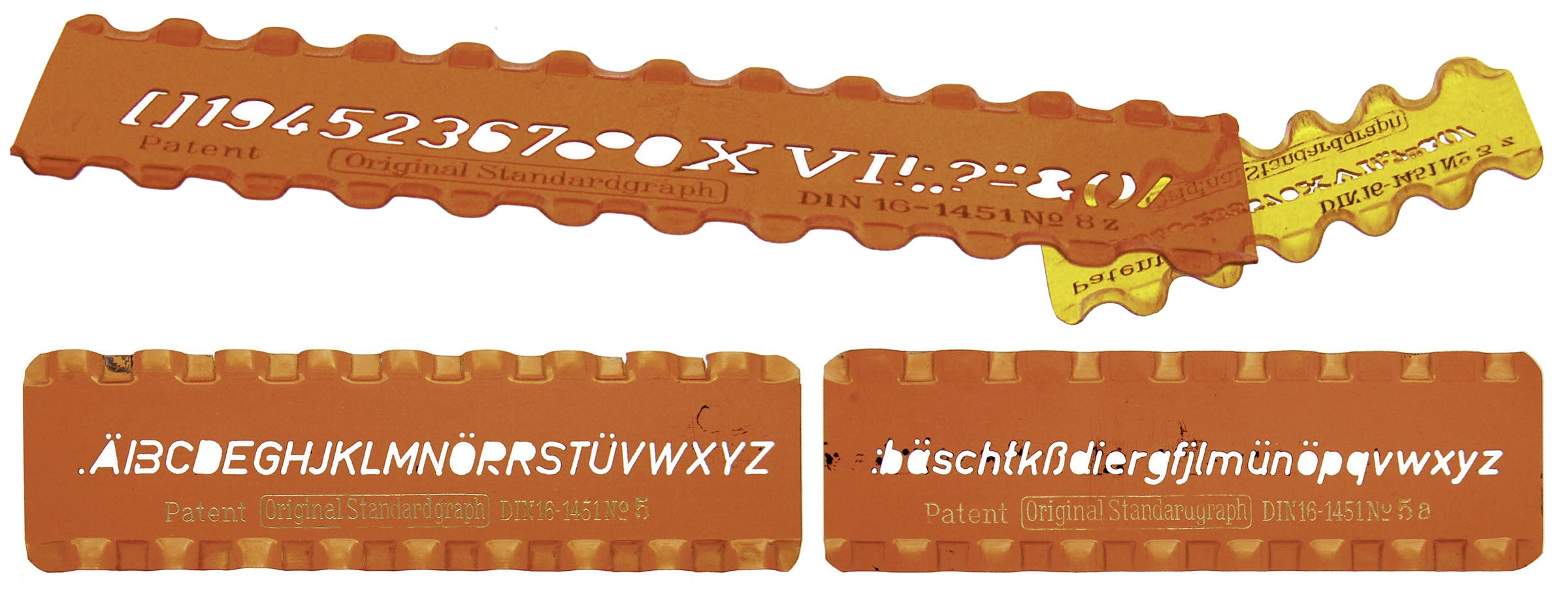
Lettering guides were originally intended as a learning aid only, but many accomplished users also relied on them for achieving more uniform and legible text. A significant issue, however, was that when the guide was placed directly onto the writing surface, the ink tended to flow under the edge and smear. This could be avoided by placing a spacer between the guide and the paper, and by 1920 such spacers were attached directly to the guide as rails, an innovation deemed worthy of a separate patent. In the years around World War II, Standardgraphs were manufactured with scalloped edges to conserve material and to eliminate the expensive wooden or metal rails. Later on, when the guides were made of injection-moulded plastic, the problem was solved by adding feet.
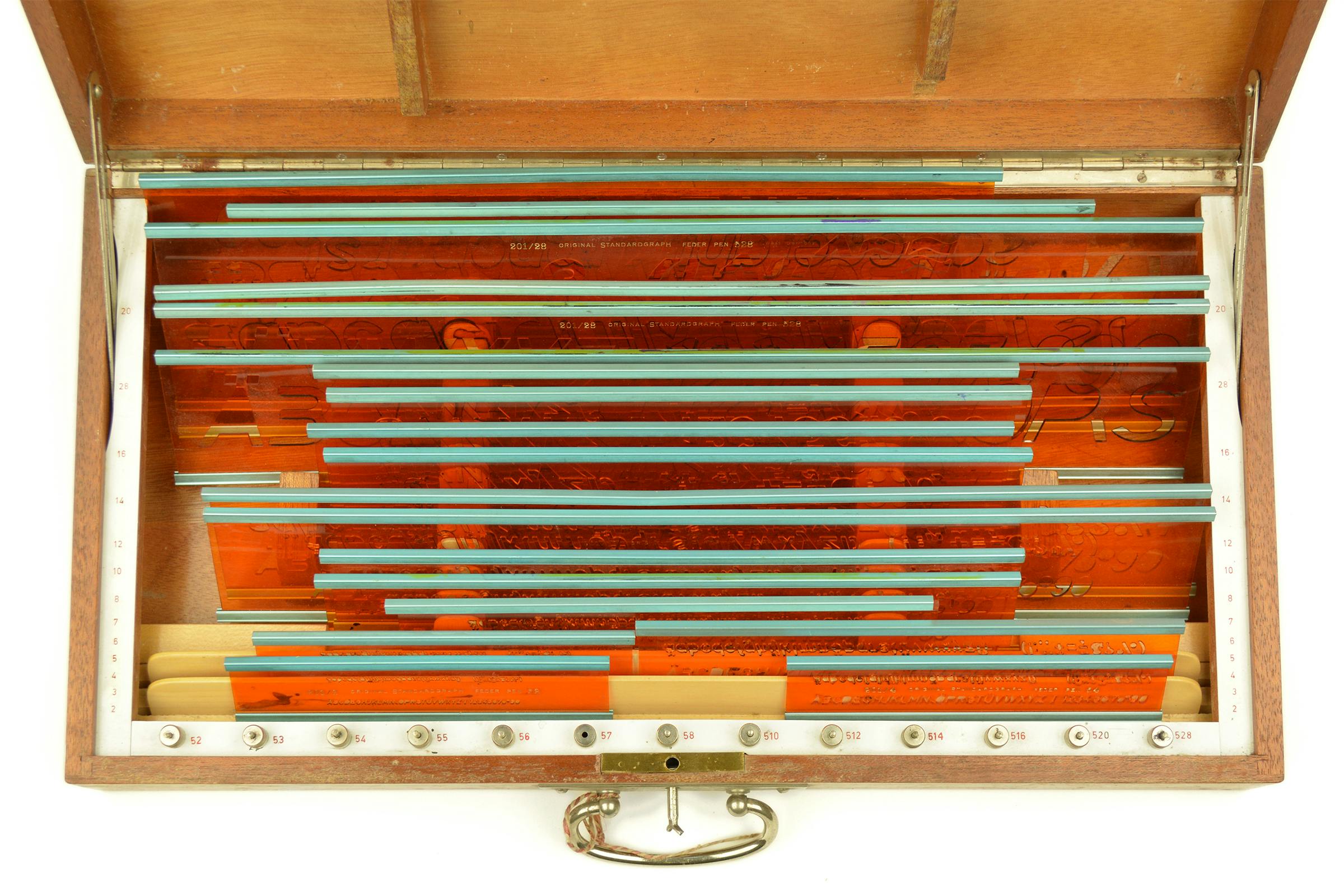
Variable Devices
Because typical projects require more than one size of lettering, draftsmen had to use multiple sizes of guides. Furthermore, since some tasks called for inclined letters while others specified upright ones, the number of guides was multiplied again. The need to simplify this situation inspired the development of devices that could provide variable angles and sizes. An early example of such a truly pantographic lettering tool was the Polynorm by Willy P. Müller — powerful in principle, but hardly easy to use.
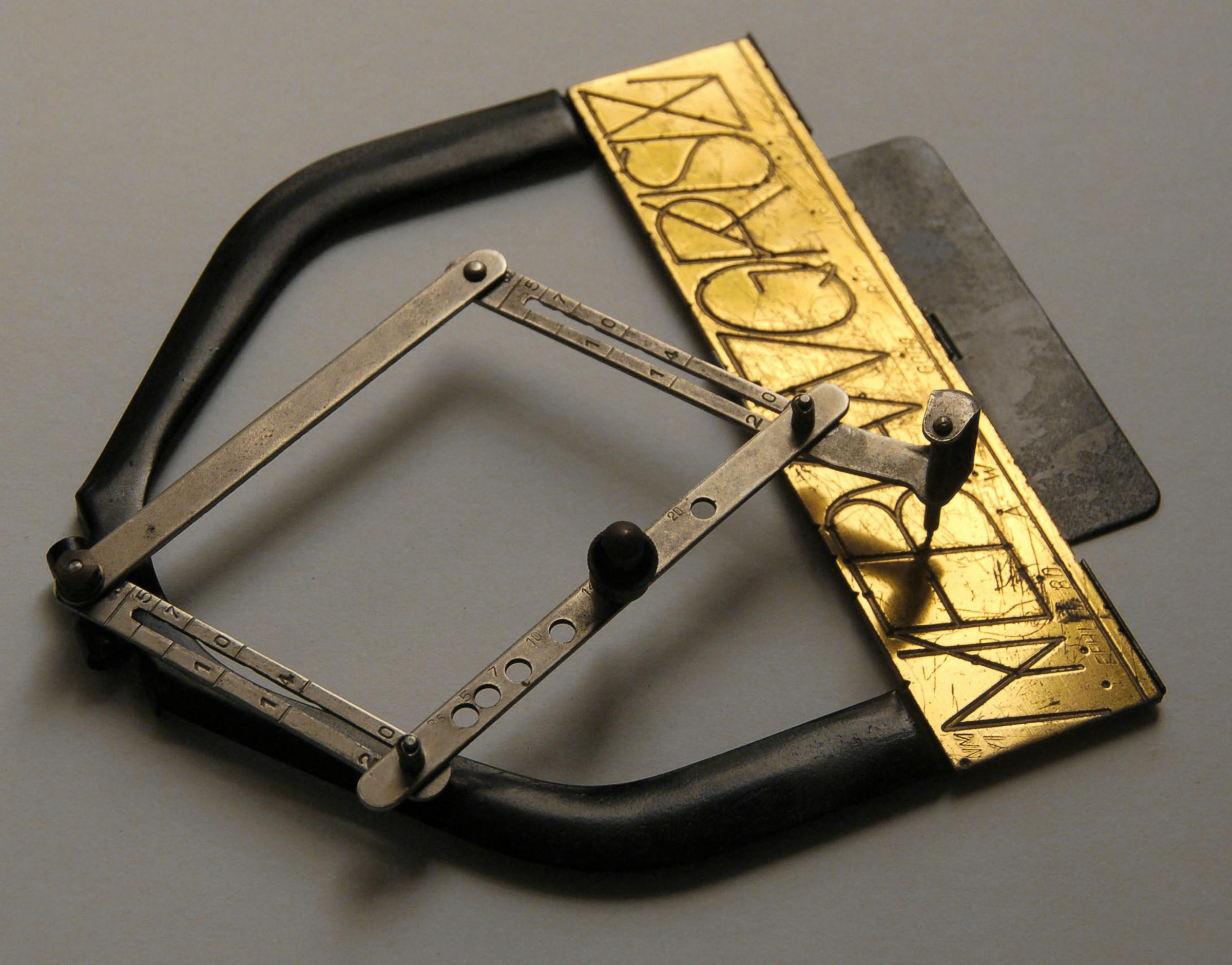
A different, more successful device was invented by Heinrich Kassebaum and patented in 1920. Sold as the DINgraph, it permitted the construction of letters of various angles and heights (at a fixed width), derived from a single template. The DINgraph’s scriber consisted of a forked bar with two pins and a pen, forming an obtuse triangle. The tail pin was guided in a straight groove of the ruler, while the tracer pin was made to follow the glyphs engraved into the template. The free arm of the scriber translated this movement and reproduced the forms via the pen affixed to its end.
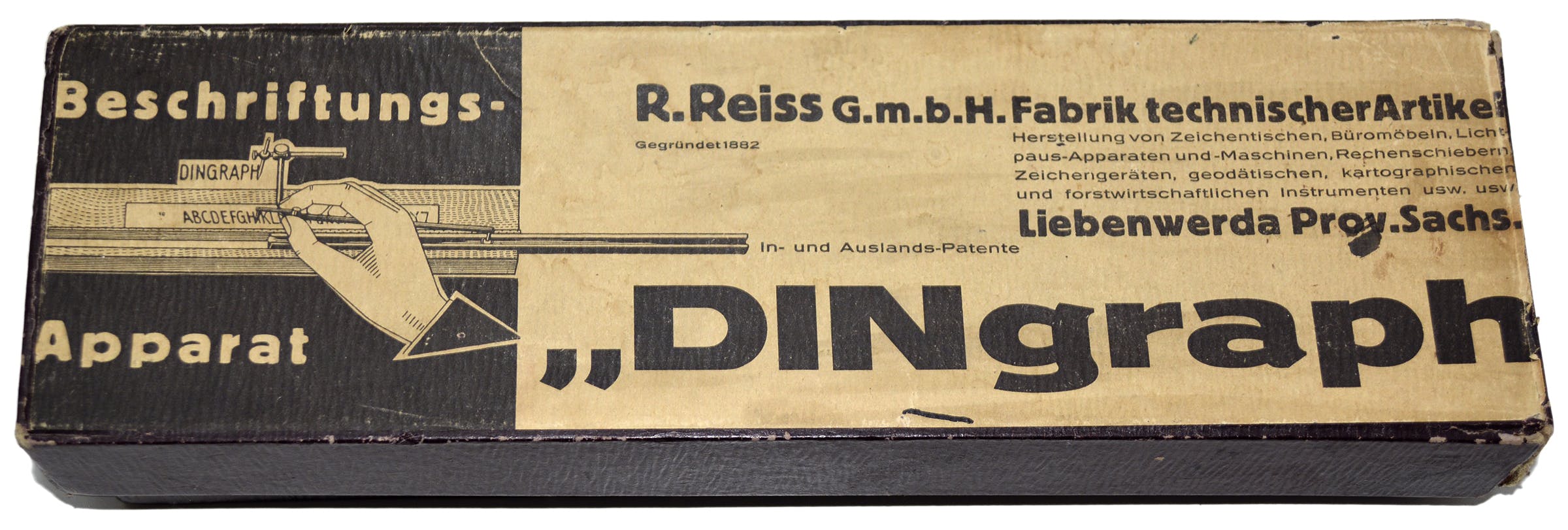

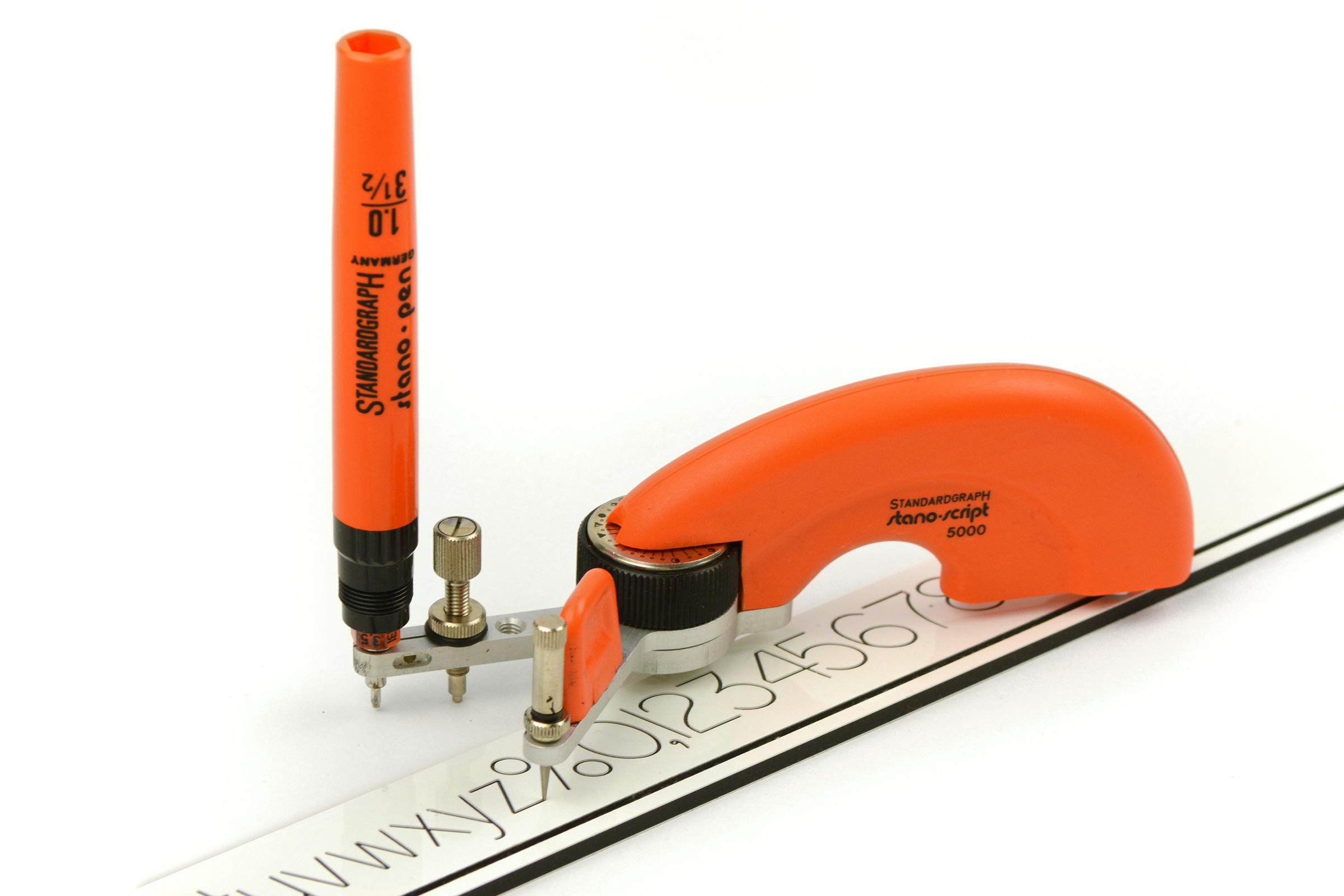
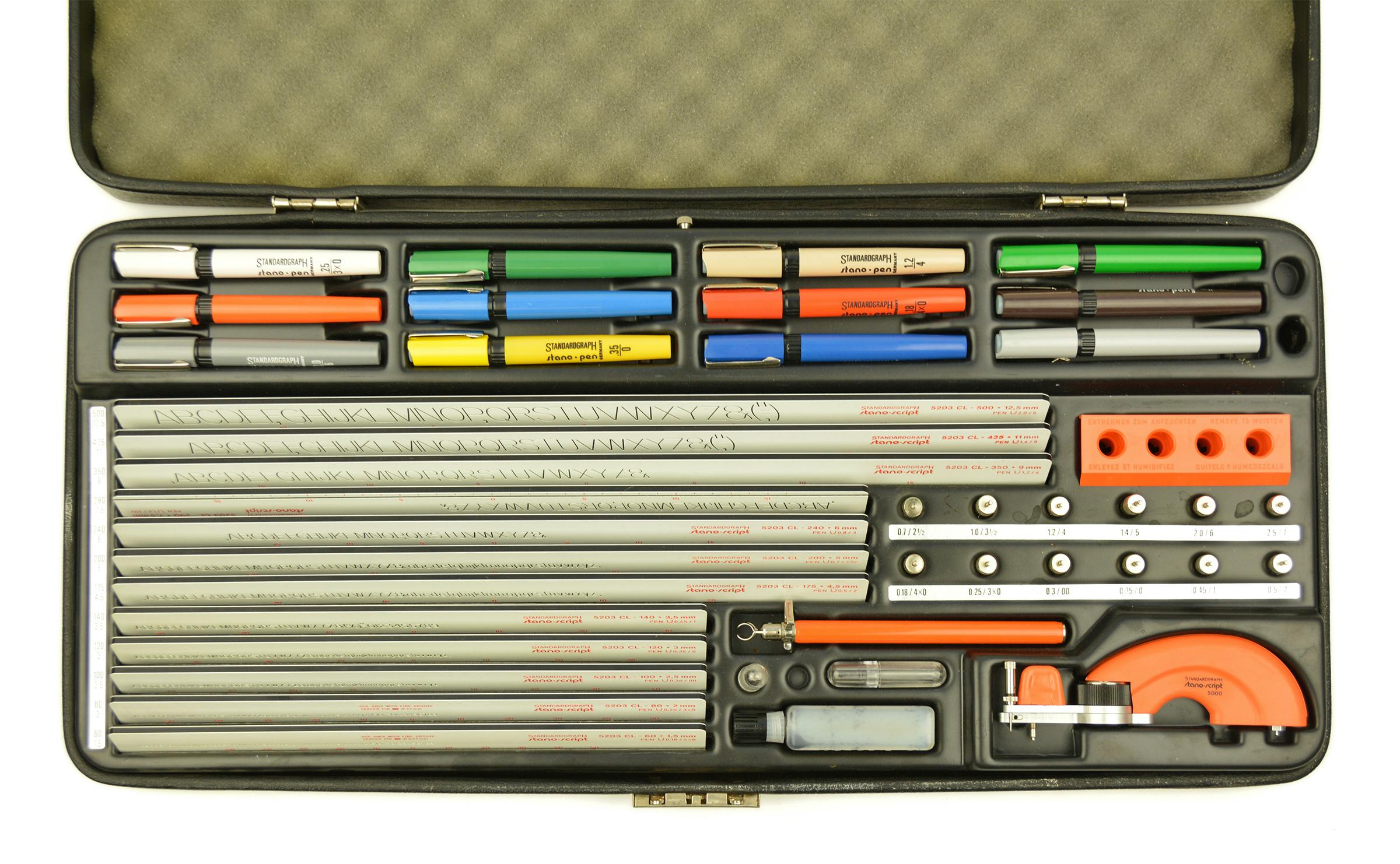
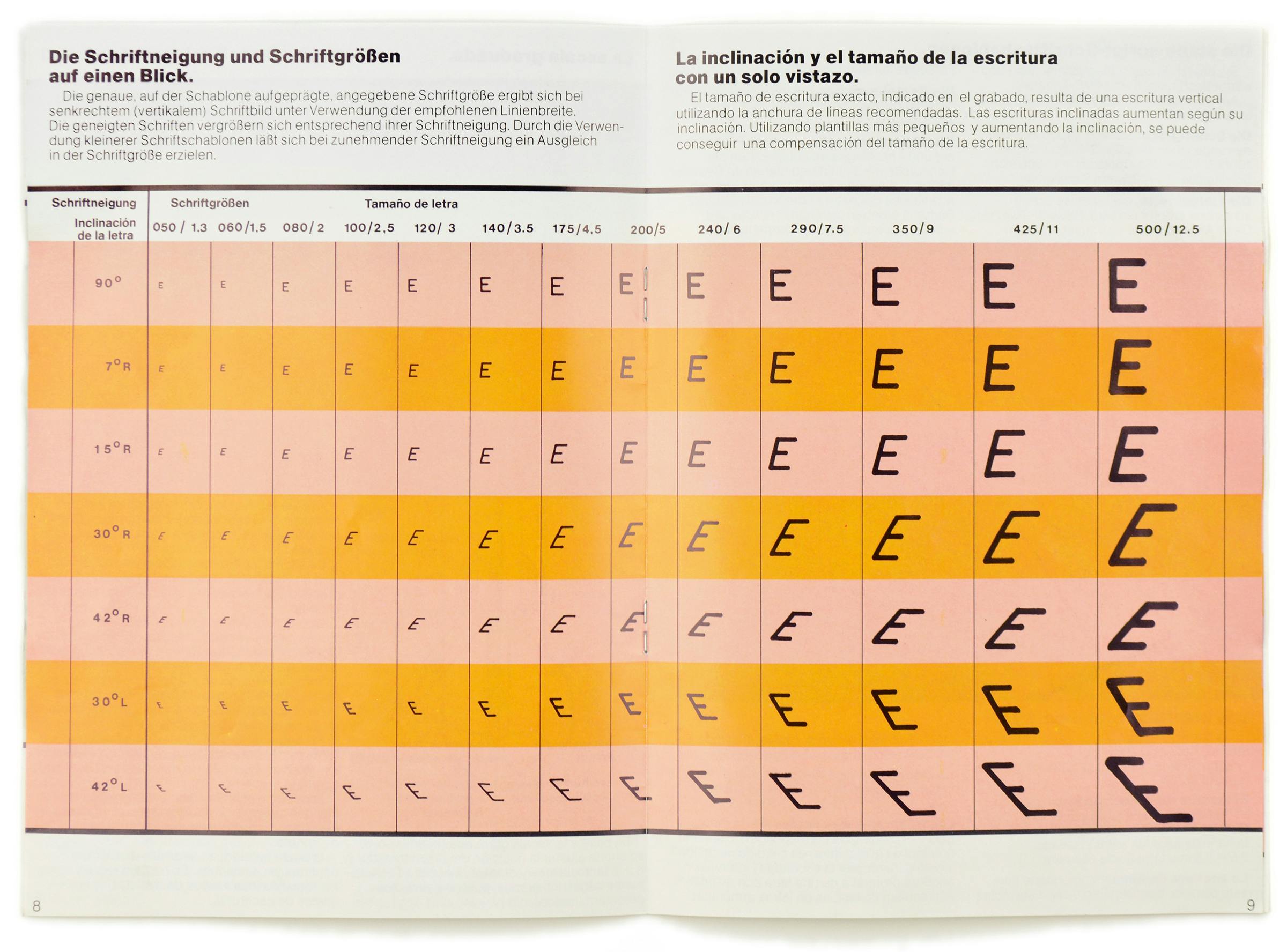
CNC Pen Plotters
The next evolutionary step was the introduction of the first electronic lettering machine. Developed by the Rotring company in the 1970s, the NC-Scriber was launched circa 1980 and revolutionised the time-consuming drafting process. An enhancement of larger flatbed or reel-fed forerunners, this computer-controlled mini plotter could move its arm along the X and Y axes, so that the attached technical pen rendered the text which had been input via the keyboard. Covering a drawing area of about 18×3 cm, its potential could be greatly expanded by fixing it to the protractor head of a drafting machine, making it freely movable across huge drawing boards. Within a few years, several manufacturers including Bigraph, Mutoh, Riefler or Held responded with similar CNC scribers. One of them was the MAX Cadliner from Japan. Equipped with seven fonts, including one compliant with the DIN standard, this pen plotter offered control over parameters like size, slant, width, tracking, linespacing and writing direction. Such lettering machines also offered the possibility of storing frequently used texts. They soon became programmable and can be considered direct precursors of today’s CAD applications on the PC.
Writing Instruments
The development of lettering devices is closely connected with the evolution of writing instruments. The usual tool in the previous days of freehand lettering was the pointed pen with its flexible nib, producing a roundhand script with vertical stress. It was used in combination with the ruling pen for the exact rendering of thin lines. The end of the 19th century saw a revival of the broad-nibbed pen in Germany and elsewhere. Most notably, pen manufacturer Friedrich Soennecken promoted his Rundschrift, a version of the French Ronde, which was adopted by several Prussian ministries for administrative use.
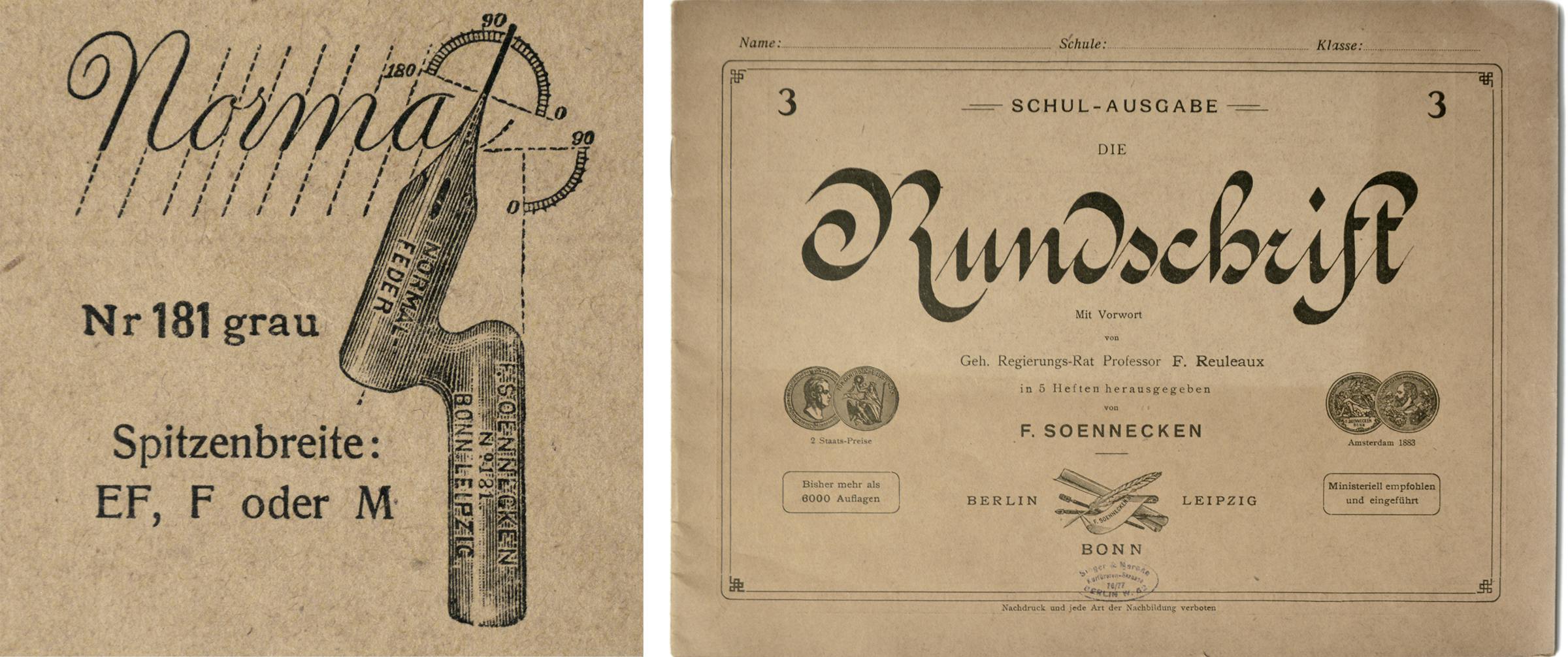
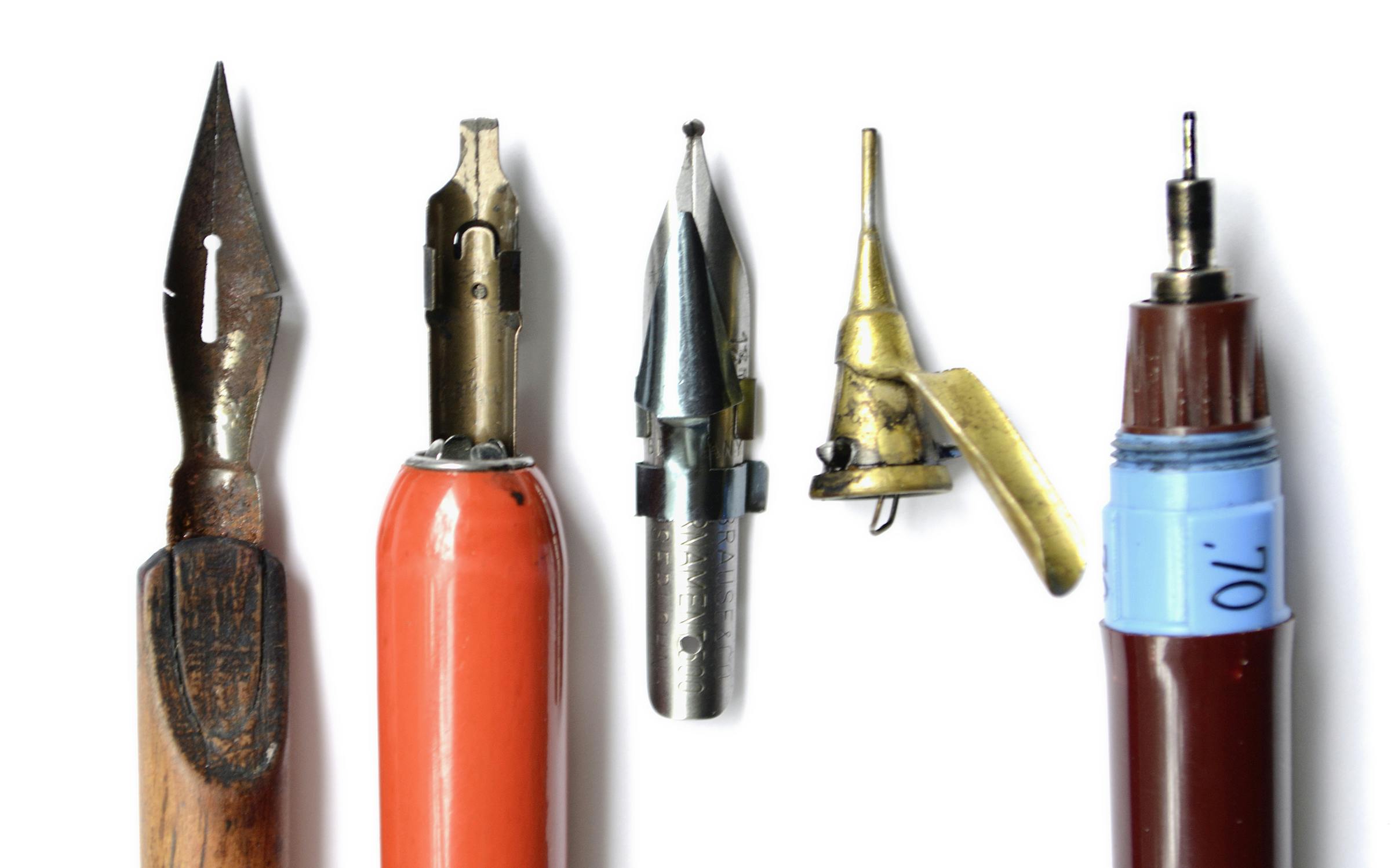
Letter Styles
The drafting letter style that emerged in the early 20th century can be characterised as a skeletal block letter, i.e. an unconnected sans serif of uniform stroke width. Its monolinearity fulfiled the desire for simplicity and clarity. In Germany, this style — popularised not least by Bahr’s Normograph, and pioneered by internal standards of big companies — was made into a general industry standard in 1919. DIN 16 defined the inclined letterforms to be used for all kinds of technical lettering, and DIN 17 subsequently added an upright version. Hence from the 1920s onwards, all German lettering guides intended for drafting featured Normschrift, bringing an end to the diversity that could be found in previous guides, which included blackletter and swashy, cursive letterforms.
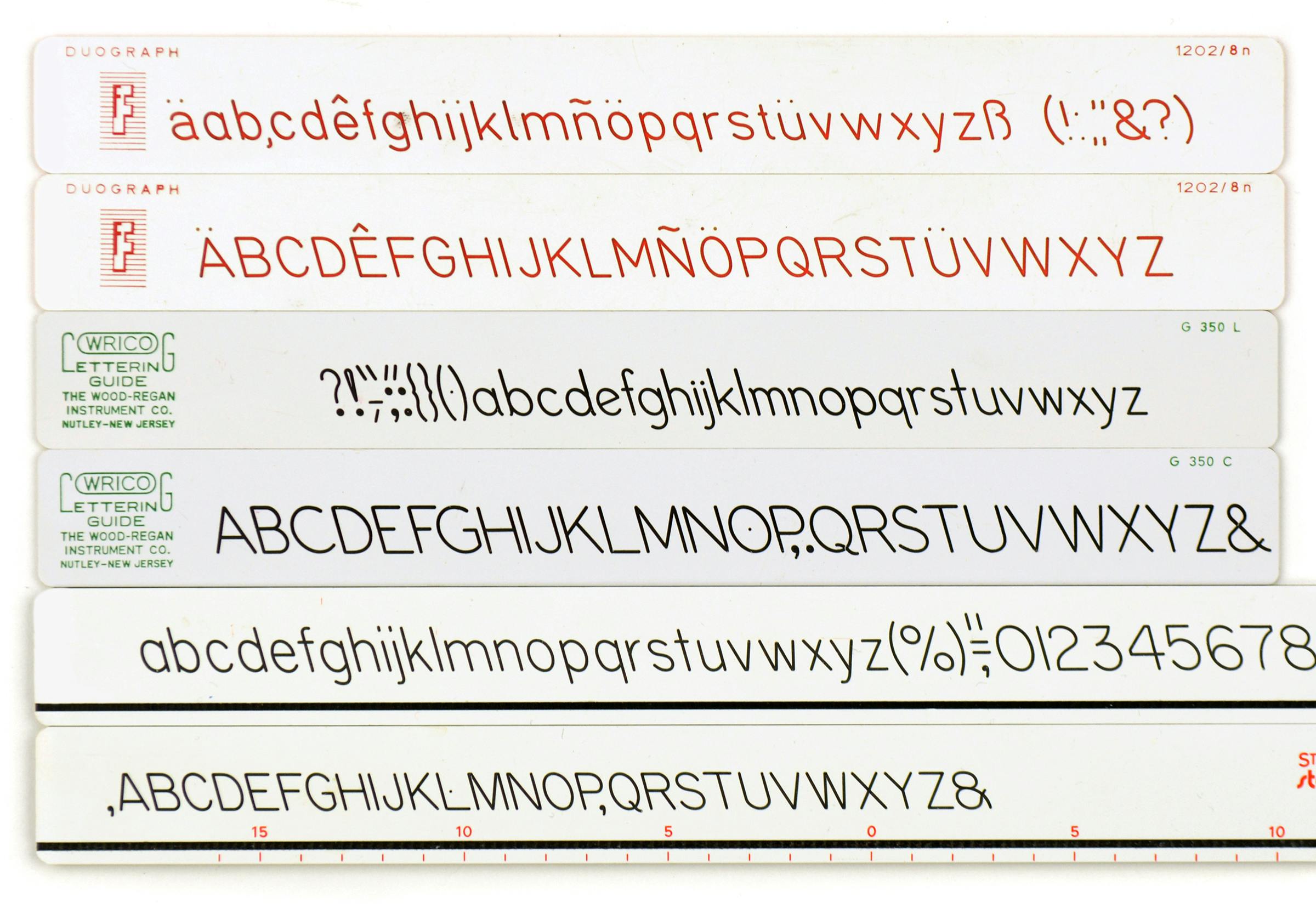
Outside Germany, other organisations such as France’s AFNOR (Association Française de Normalisation) introduced similar standards. Although different in skeleton and details, these models all are of even stroke width, with round terminals, a feature necessitated by the tool. Also, they are almost always specified in both upright and slanted versions, normally inclined by 15 degrees. Some manuals prescribe the former for the use of guides, and the latter for freehand lettering, since in handwriting a certain degree of inclination is favourable for ergonomic reasons. Probably more crucially, the inevitable deviations in slope are less noticeable when the ideal is already inclined instead of perfectly upright. Technically, guides and lettering devices are not limited to standard letters, of course. A Leroy catalog from 1960 lists more than 30 available template genres, from specialised symbols (for math, music, electronics, geology or the military), to foreign scripts (like Cyrillic or Greek), but also concrete adaptations of existing typefaces like Spartan, Caslon Bold Condensed, Old English or (Kaufmann) Script (evidently for purposes other than technical lettering).
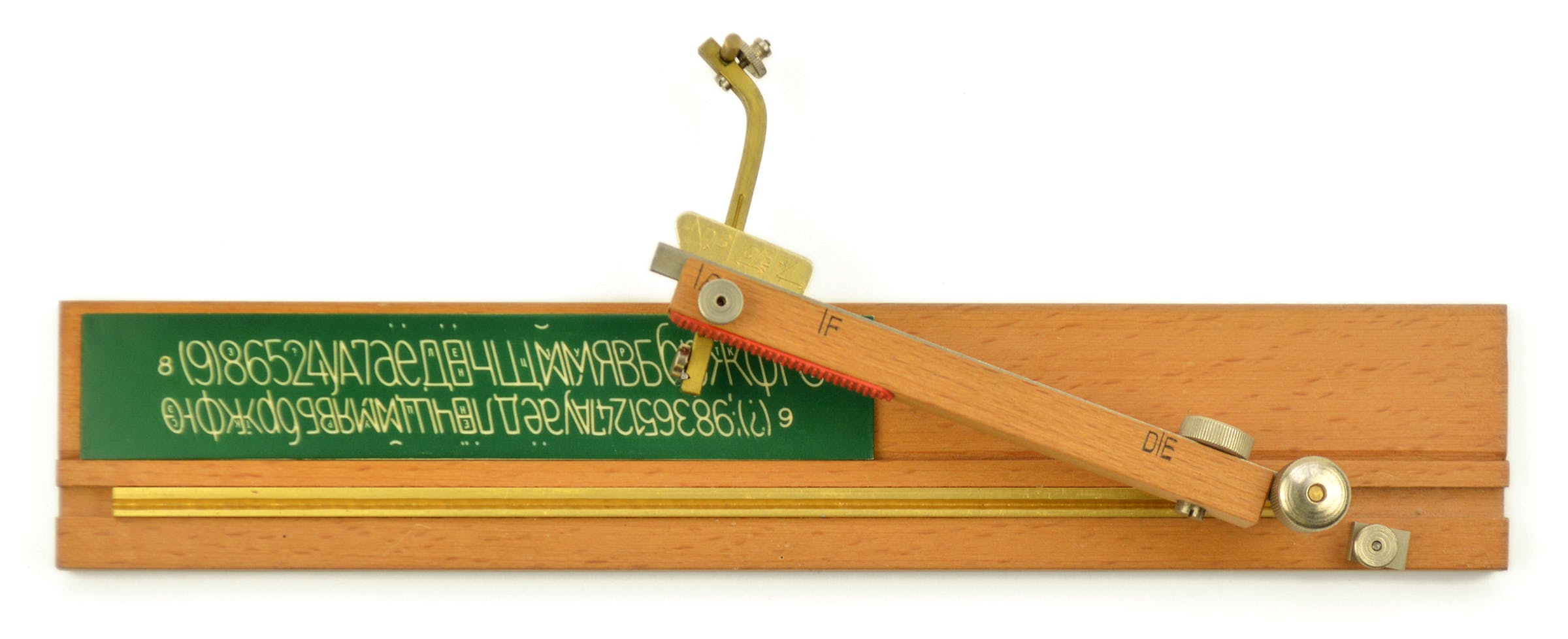
In 1976, DIN 16 and 17 were replaced by DIN 6776, which is equivalent to ISO 3098. This new international agreement was introduced to harmonise the various national standards. Characterised by its square letterforms, it was originally developed in response to the limitations of microfilming. Letterforms compliant with ISO 3098 are designed without any acute-angled joins, since such features don’t survive extreme reduction well.
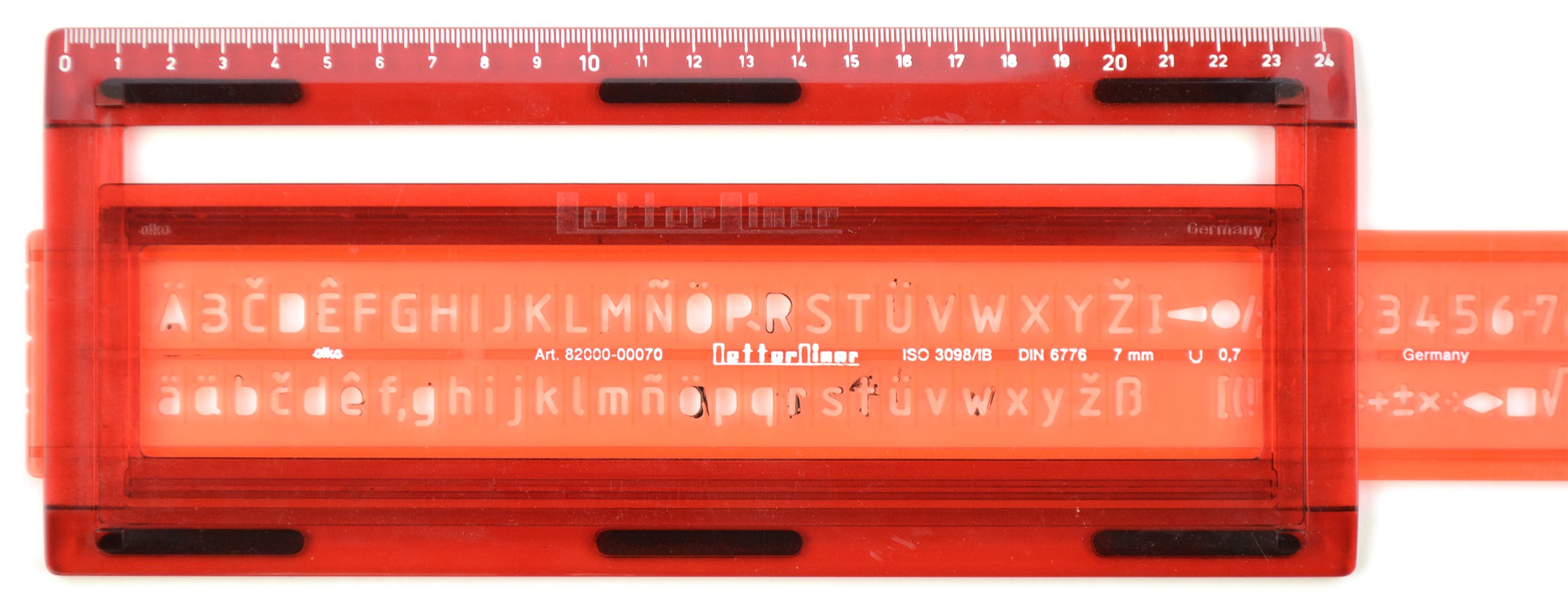

ISO 3098 remains today’s drafting standard. In view of all the efforts that went into standardisation, it is an amusing anecdote that the committees couldn’t decide on the definitive form of the lowercase ‘a’, so the ISO recommendation includes both a monocular and a classical form for this letter. In an age of personal computers and laser printers, these guides and other lettering devices have widely disappeared, but their legacy continues to provide inspiration for new, digital typeface designs.